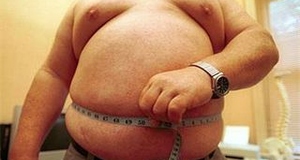The Changing Shape of America's Youth: Combating Childhood Obesity Using the School Nurse
By
2012, Vol. 4 No. 03 | pg. 1/2 | »
KEYWORDS:
Drive past a playground where children are playing and one thing is clear: the children of today come in all different shapes and sizes. The unfortunate reality is that an increasing number of these children are at a higer risk of early death because of childhood obesity. Despite being preventable and treatable, childhood obesity is an epidemic (CDC, 2011). Are children armed with the knowledge required to combat this ever-growing trend? Who is responsible for teaching children what is unhealthy? Healthy lifestyle information must be integrated into elementary school children’s curriculum to prevent childhood obesity. As this paper explores, school nurses are in a position to be at the forefront of collaborating with educators to teach students and their parents how to make better nutrition and exercise choices. Obesity occurs when fat accumulates in adipose tissue and the organs, and is a disease “that promotes disability, decreases productivity, and shortens life span” (Ahima, 2011). According to the Centers for Disease Control (2011), childhood obesity has been on the rise since the 1970s. From 1971 to 2008, the percentage of obese children ages 6-11 rose from around 5% to over 20% (CDC, 2011). According to Murphy and Polivka (2004), “Obese children have a higher risk of developing serious chronic conditions such as hypertension, type 2 diabetes mellitus, obstructive sleep apnea, and hyperlipidemia” (p. 40). This is frightening considering heart disease, cerebrovascular events, and diabetes mellitus were among the top eight leading causes of death in the United States in 2007 (CDC). With the numbers rising, it is imperative that children and their parents are educated on how to both prevent and treat childhood obesity. School age children today are living in a technological world, greatly affecting the rise of childhood obesity. Their access to TV, video games, and social media is increasing, therefore decreasing their time for physical activity (Nauta, Byrne, & Wesley, 2009). Fast food, sodas, vending machines, and processed foods are easy ways for children to make choices about their food without the guidance of a parent (MMWR, 1996). Portion control and calories are not being monitored when these types of foods are being chosen over healthy alternatives (Nauta, Byrne, & Wesley, 2009). Meanwhile, parents attribute the rise in childhood obesity to a lack of control over their children’s food choices, peer pressure, heredity, poor habits and portion control, and low socioeconomic status (Murphy and Polivka, 2007). A child’s health is dependent on decreasing energy intake (calories consumed) and increasing energy used (calories burned) (CDC, 2011).An untapped resource for combatting obesity in a child’s life is the school nurse. It has been over 100 years since the introduction of school nurses. Their roles have changed substantially over the last 25 years, mostly in part to the integration of special needs students being placed in public schools and a higher incidence of children with chronic illnesses (Broussard, 2004). The National Association of School Nurses (2010) provides the best explanation of the current role of the school nurse: “School nursing is a specialized practice of professional nursing that advances the well-being, academic success and life-long achievement and health of students… School nurses facilitate positive student responses to normal development; promote health and safety including a healthy environment; intervene with actual and potential health problems; provide case management services; and actively collaborate with others to build student and family capacity for adaptation, self-management, self advocacy, and learning.” School nurses are responsible for obtaining health histories, screenings (vision, hearing, scoliosis, etc), medication administration, providing care for emergency injuries and illnesses, education, and coordinating with other faculty within the school (Healthy Schools, 2008). In a School Nurse Sample Job Description (Healthy Schools, 2008), the school nurse is called to make visits to the child’s home to help coordinate care with families and educate parents and children to take initiative in bettering their health. This job description places a lot of responsibility on the school nurse, and clearly refutes the notion that they only supply ice packs, Band-Aids, and Tylenol to children on a daily basis. The roles of the school nurse contain the criteria needed to implement an in school program whose goal is to decrease the incidence of childhood obesity and equip children with the knowledge and tools necessary to make it a lifelong lifestyle. By recognizing their role, school nurses can integrate a specific plan into what they are already doing on a daily basis. School nurses are required to “provide ongoing health counseling with students, parents, school personnel, or health agencies,” (Healthy Schools, 2008) so why not counsel every student at once? In the long run, this may give the school nurse more time to spend with children in need of medical interventions related to illness and injury because teachers will collaborate with health education. A study conducted by Murphy and Polivka (2007) revealed that parents want to know the status of their child’s health, including their BMI. The study also revealed that parents feel that childhood obesity could be prevented and treated by school treatment programs, counseling for themselves and their child, and integrating proper nutrition into the classroom. Traditionally, the elementary school year is from August to May, which means school nurses have the opportunity to impact the lives of these children for about nine months of the year. With the implementation of year round school, some schools will be adding more days to their school year (Huebner, 2010), giving school nurses an even greater opportunity. School nurses have the educational background and resources needed to assess children for obesity, set goals, and implement a plan (Nauta, Byrne, & Wesley, 2009). This combination of expertise and seeing the children on a daily basis gives school nurses the platform needed to reverse the trend of childhood obesity. School nurses should organize a plan to educate children on the ideal picture of health and wellness. Implementations can be small, but will have a large effect on students who suffer with obesity. Results will be evaluated yearly and progress will be reported to the students’ parents. It is important that parents are informed and involved in the process so that the lifestyle changes have a better probability of becoming habit for the children. Nurses need the support of parents and other teachers in order for this plan to succeed. Every child would benefit from education regarding proper nutrition and exercise. The school nurse would put together a monthly newsletter that would highlight various health promotion topics. Prior to school registration a letter explaining the program would be sent to parents of children in Kindergarten through fifth grade. The newsletter would outline the goals of the program as well as the screenings that will be done at the beginning and to evaluate progress. Newsletters sent during the school year would include information on family activities that involve physical activity, upcoming after school activities, appropriate serving sizes, and healthy meal and snack ideas. The information provided would be concurrent with the season and would all be low cost so that no family was excluded. Education is the focus of the program, however without evaluating and reevaluating students, it would be difficult to see the effectiveness of the teaching. To accurately track and treat childhood obesity, baseline data needs to be collected at the beginning of the school year. The school nurse would be at registration, weigh and measure every child and enter the information by grade level or individual classroom, depending on the size of the school. The CDC offers a “Children’s BMI Tool for Schools” that can store 2,000 children’s height, weight, BMI, and BMI percentile (CDC, 2010). This tool separates the BMI percentiles by sex and places the data into categories: Underweight (< 5th percentile), normal BMI (5th-85th percentile), overweight or obese (> 85th percentile), and obese (> 95th percentile). Larger school systems may need volunteers from the community or teaching staff to enter measurements. The school nurse will then further evaluate the children that are above the 85th percentile by checking blood glucose levels and blood pressure to monitor for diabetes and hypertension. School nurses will collaborate with educators to integrate proper nutrition and fitness information into the curriculum. They would meet at the beginning of the school year and the school nurse would teach and provide educators with the information to pass on to the children. Obviously not every aspect of their education would revolve around food, however with a few small integrations, healthy food will become a part of an elementary student’s every day vocabulary and they will become familiar and comfortable with it. The goal would be once or twice a week the students have a worksheet focusing on healthy lifestyles or introducing a new concept. The easiest and most logical place for fitness to be encouraged is at recess. Most children play without being told to, but teachers would watch for those not playing and try to encourage them by initiating a physical group game.Continued on Next Page » Suggested Reading from Inquiries Journal
Inquiries Journal provides undergraduate and graduate students around the world a platform for the wide dissemination of academic work over a range of core disciplines. Representing the work of students from hundreds of institutions around the globe, Inquiries Journal's large database of academic articles is completely free. Learn more | Blog | Submit Latest in Health Science |
















